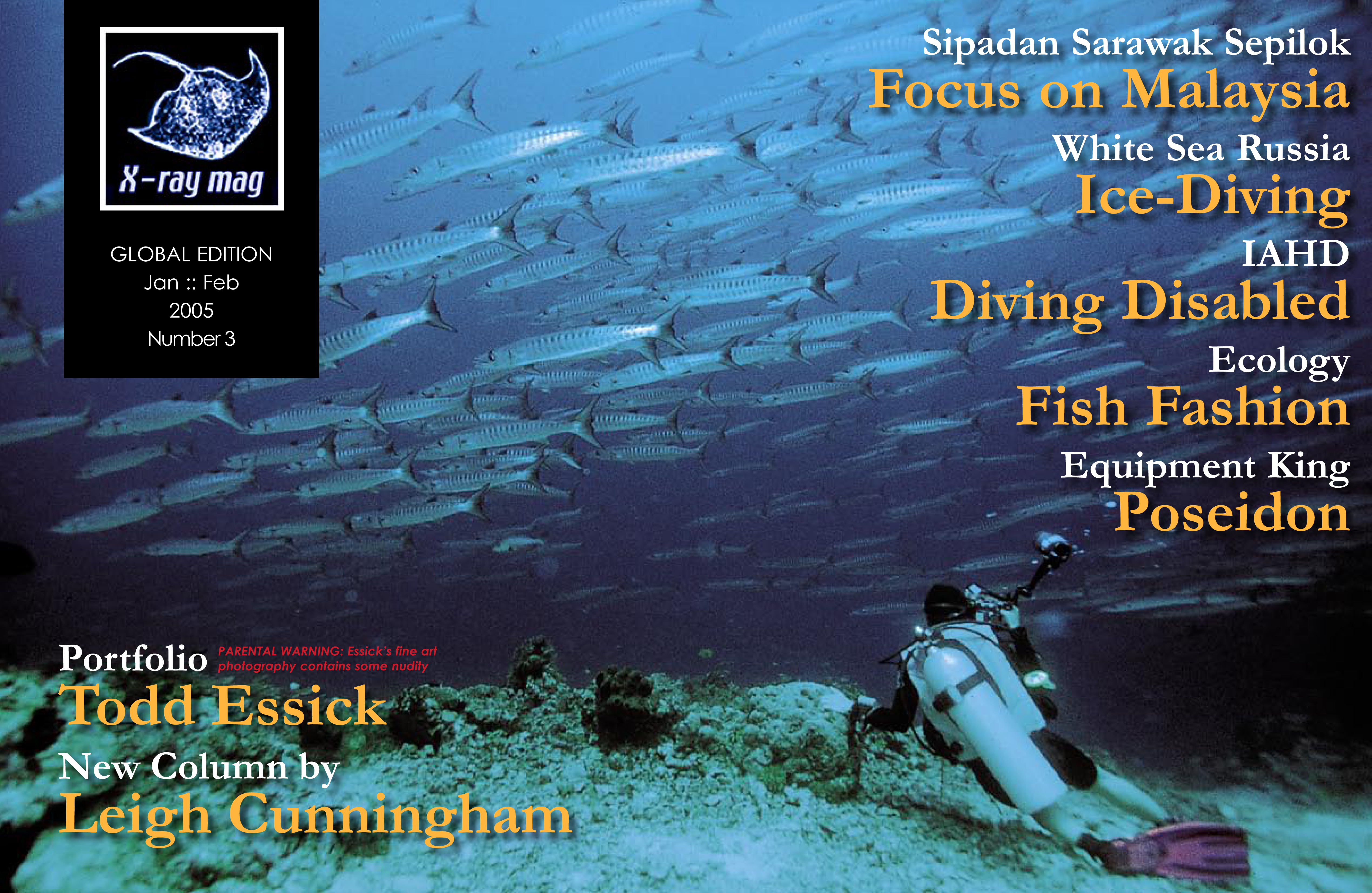Regardless of the type of dive, shallow non-deco recreational dive or the 120 metre deep mix wreck dive in the Atlantic, correct weighting will increase the safety and comfort of any dive tenfold. However, it is often the case that not enough emphasis is put on correct weighting from the very beginning, i.e. at the Open Water course.
X-Ray Mag #3
Feature articles in this issue with stand-alone pdfs
Is there any diver who has not been fascinated by the wonderful colours of reef fishes and the reefs of their habitat? Those of us who have been lucky enough to experience at first hand this interaction between these creatures and their environment, cannot fail to have wondered about this rich excess of colour and the reasons for it. In nature there is a reason for everything – if we can but find it.
Fraser Bathgate, Vice President and Director of Training for the International Association of Handicapped Divers (IAHD), tells X-RAY MAG what drives him to dive off his wheelchair and into the depths
Depending on your yardstick, or which encyclopedia you consult, Malaysia boasts a colossal coastline of 4,675 km. This area includes 2,068 km for Peninsular Malaysia and 2,607 km for eastern Malaysia.
The White Sea has sublime water clarity. It forms indescribably beautiful ice and peculiar fantastical ice shapes. The water temperature hovers around 0-10°C and nurtures plenty of marine life, which makes the White Sea one of the best spots in Europe for ice-diving.
Even before the clownfish achieved Hollywood stardom as cartoon character Nemo, most of us, divers and non-divers alike, knew about this little colorful fish nesting in a stinging sea anemone. As popular photographic subjects the symbiotic relationship between the fish and their invertebrate hosts have become one of the most well known images from the world beneath the surface. What is less known, however, is how the fish avoid being stung.
ADMAT is back in action, this time in the Philippines where we have organised a maritime archaeological survey-training project in a beautiful and historically significant area. BSAC, the British Sub Aqua Club, have asked us to run this as an expedition, which we are, but as it is an ADMAT project it is open to all as usual.








